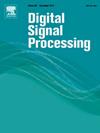Multi-task learning for accurate and efficient nucleus instance segmentation based on ordinal regression
IF 3
3区 工程技术
Q2 ENGINEERING, ELECTRICAL & ELECTRONIC
引用次数: 0
Abstract
Nucleus instance segmentation is a critical prerequisite in many microscopy-related research fields, including pathology, drug discovery and functional genomics. The biological tasks involved depend on highly accurate and readily available nucleus segmentation results. However, both manual and existing computer-assisted methods face challenges in balancing accuracy and efficiency due to the diverse sizes, shapes and morphologies of nuclei. Additionally, some nuclei are often clustered and overlapping, which imposes higher demands on segmentation methods. Here, we present an ordinal regression-based nucleus instance segmentation method with multi-task learning that leverages rich instance-aware information encoded within spatial-based ordinal rankings. These ordinal rankings are generated and predicted by our proposed Distance Grading Decrease (DGD) strategy and EfficientNet-based lightweight network, W-Net, respectively. Combined with pixel-level foreground probabilities, these rankings are utilized to separate clustered nuclei and achieve accurate segmentation through a marker-controlled watershed algorithm. Our method demonstrates state-of-the-art accuracy and efficiency compared to others, as validated on two independent multi-tissue histology image datasets.
基于有序回归的多任务学习核实例分割
核实例分割是许多与显微镜相关的研究领域的关键前提,包括病理学、药物发现和功能基因组学。所涉及的生物学任务取决于高度准确和易于获得的核分割结果。然而,由于核的大小、形状和形态各异,人工和现有的计算机辅助方法在平衡准确性和效率方面都面临挑战。此外,一些核经常聚集和重叠,这对分割方法提出了更高的要求。在这里,我们提出了一种基于有序回归的多任务学习核实例分割方法,该方法利用了基于空间的有序排名中编码的丰富的实例感知信息。这些顺序排名分别由我们提出的距离分级减少(DGD)策略和基于效率网络的轻量级网络W-Net生成和预测。结合像素级前景概率,利用这些排序分离聚类核,并通过标记控制分水岭算法实现精确分割。与其他方法相比,我们的方法具有最先进的准确性和效率,并在两个独立的多组织组织学图像数据集上进行了验证。
本文章由计算机程序翻译,如有差异,请以英文原文为准。
求助全文
约1分钟内获得全文
求助全文
来源期刊

Digital Signal Processing
工程技术-工程:电子与电气
CiteScore
5.30
自引率
17.20%
发文量
435
审稿时长
66 days
期刊介绍:
Digital Signal Processing: A Review Journal is one of the oldest and most established journals in the field of signal processing yet it aims to be the most innovative. The Journal invites top quality research articles at the frontiers of research in all aspects of signal processing. Our objective is to provide a platform for the publication of ground-breaking research in signal processing with both academic and industrial appeal.
The journal has a special emphasis on statistical signal processing methodology such as Bayesian signal processing, and encourages articles on emerging applications of signal processing such as:
• big data• machine learning• internet of things• information security• systems biology and computational biology,• financial time series analysis,• autonomous vehicles,• quantum computing,• neuromorphic engineering,• human-computer interaction and intelligent user interfaces,• environmental signal processing,• geophysical signal processing including seismic signal processing,• chemioinformatics and bioinformatics,• audio, visual and performance arts,• disaster management and prevention,• renewable energy,
 求助内容:
求助内容: 应助结果提醒方式:
应助结果提醒方式:


